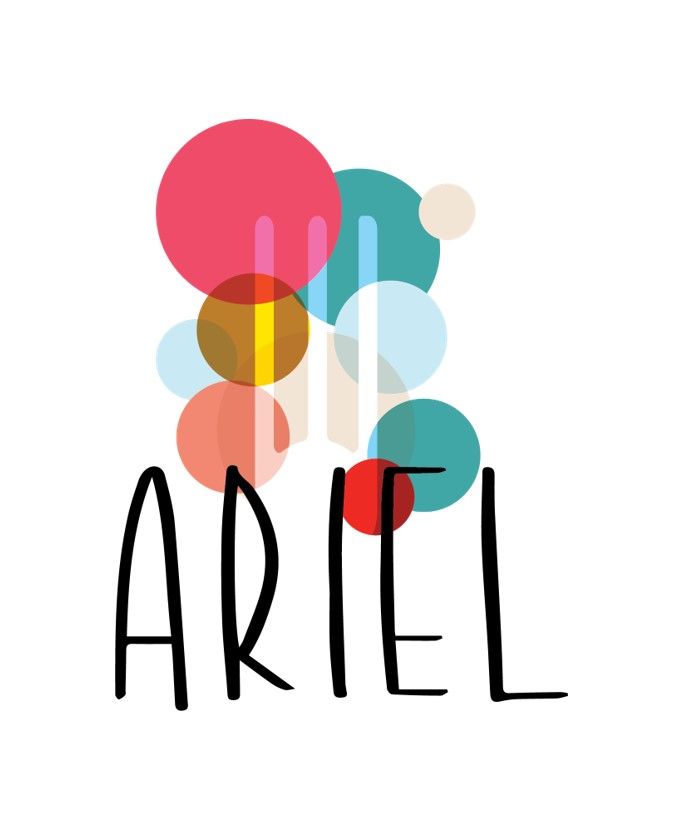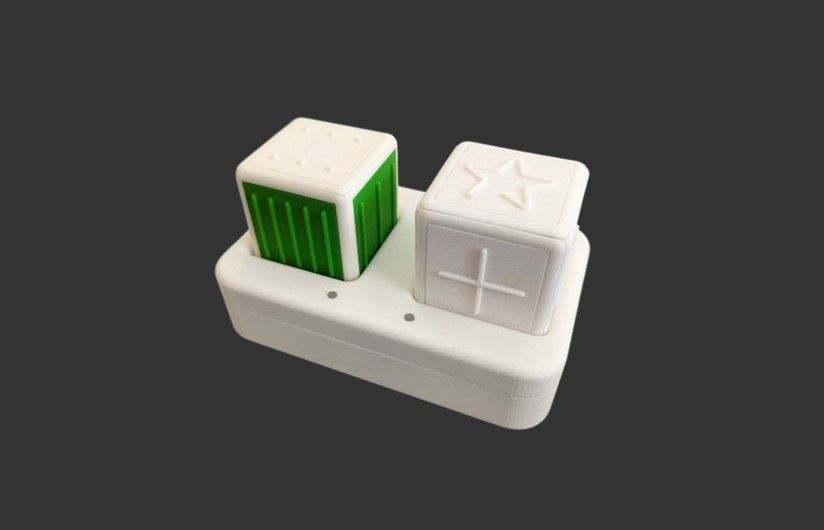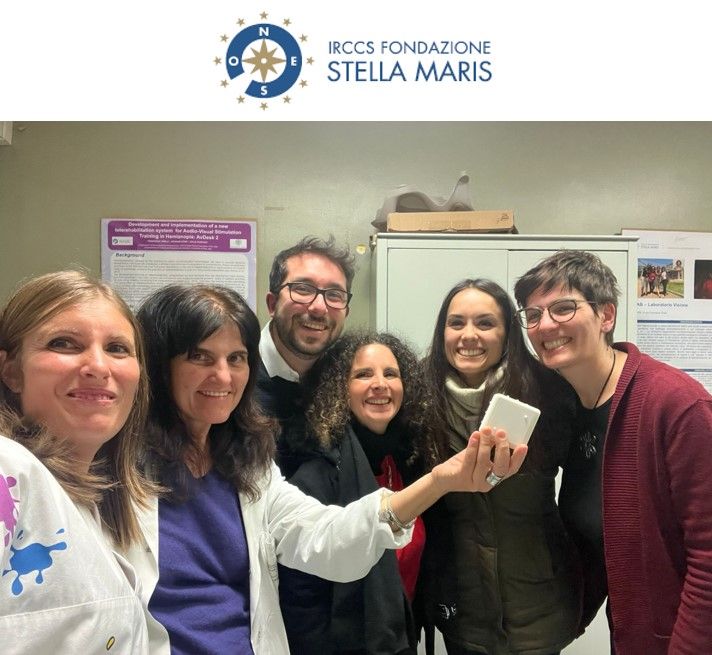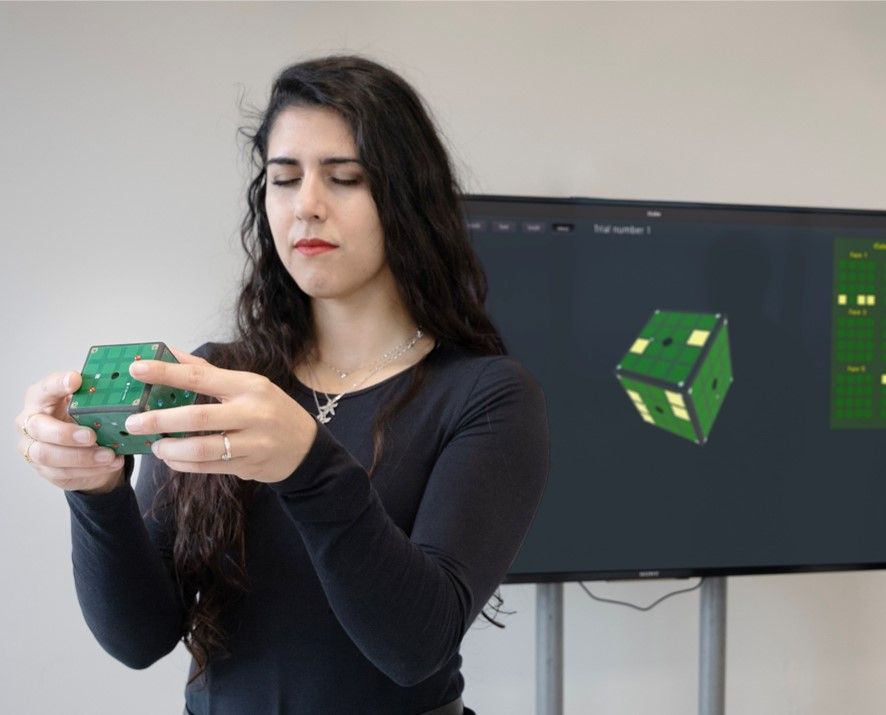ARIEL - ASSESSING CHILDREN MANIPULATION AND EXPLORATION SKILLS
“The ARIEL project aims to develop myCube, a tool enabling quantitative assessment of object manipulation”
ARIEL Project
Investigating object manipulation is crucial for the comprehension of child development and the early assessment of sensorimotor impairments. However, no current available methods allow a complete and widespread characterization of the process: (i) they do not measure all the core components of manipulation, such as the object motion and the forces applied; (ii) they are too expensive due to the cost of the devices or the need of expert annotators; (iii) they are not designed for children. The ARIEL project aims to develop myCube, a tool enabling quantitative assessment of object manipulation, designed to be engaging for children and accessible at low cost, both for neurotypical children and those with neurological and developmental disorders.

myCube
MyCube is a lightweight sensorized cube measuring its orientation in space and the position and pressure of tactile contact points on its faces. It produces vibratory and auditory feedback and presents raised patterns on the surface, which can be haptically explored. The myCube design allows for easy customization of the stimulation, with a simple way of substituting the patterned silicon faces. Stemming from the promising results of the ERC wHiSPER project in the assessment of individual haptic exploration, ARIEL will: (i) develop the myCube device, software, and haptic assessment procedures; (ii) validate its effectiveness in a large cohort of school-aged healthy children and a group of children with cerebral palsy in collaboration with expert clinicians, and (iii) plan a feasible market implementation to maximize its impact. The resulting myCube kit, composed of two myCubes, the software for data analysis, and the haptic assessment testing procedure, will represent a holistic tool including all the desired features for a low-cost, non-invasive, precise, and customizable assessment of children’s haptic skills in manipulation.

myCube Interface
The Origin
The ARIEL project stems from the ERC StG wHiSPER, which highlighted that our perception is intricately connected to our own motor models and actions, especially during object manipulation. This realization led to the development of a quantitative assessment of haptic manipulation and exploration skills through a sensorized object (iCube) developed in-house. Through rigorous experimentation, the iCube proved to be highly effective in characterizing adults’ and children’s individual differences in exploration strategies, allowing to recognize manipulation features indicative of more proficient exploration. The iCube utility extended to the detection of disparities in the exploration of blind participants based on the onset time of the disability (i.e., early vs. late blind). Also, the exploratory features extracted by iCube correlate significantly with participants’ mental rotation skills as measured with the standard Mental Rotation Test pen and paper questionnaire. MyCube (multisensory iCube) introduces essential enhancements, including the measurement of contact pressure, a novel design with an easy stimuli substitution mechanism, and the generation of vibratory and auditory feedback for multisensory stimulation.
Collaboration with IRCCS Stella Maris
The ARIEL project entails the collaboration with Dr. Francesca Tinelli and the clinicians of the VISLAB (VISion LABoratory) of the IRCCS (Institute of Hospital Care) Stella Maris, aimed at a better understanding of object manipulation skills in children with Cerebral Palsy (CP). Cerebral Palsy is the most common disorder of childhood according to the Centers for Disease prevention and Control (CDC). Among children born after the 37th gestation week, 1.5 to 4 over 1.000 in US, and 2/1.000 in Europe are affected by CP, with figures increasing to 79/1.000 in case of early birth. Diplegia (i.e., bilateral CP) and hemiplegia (i.e., unilateral CP) primarily impact children’s lower limbs, but they could produce motor limitations also in one or both sides of the upper body. Depending on the extension of the lesion, they could be paired with a wide spectrum of neurovisual symptoms, impacting children’s perception of space. Assessing diplegic and hemiplegic children object manipulation skills is determinant for the comprehension of child development, and could provide insights for educational practices, clinical approaches, and parental guidance to promote positive developmental outcomes and a better quality of life.


-
Previous Publications: